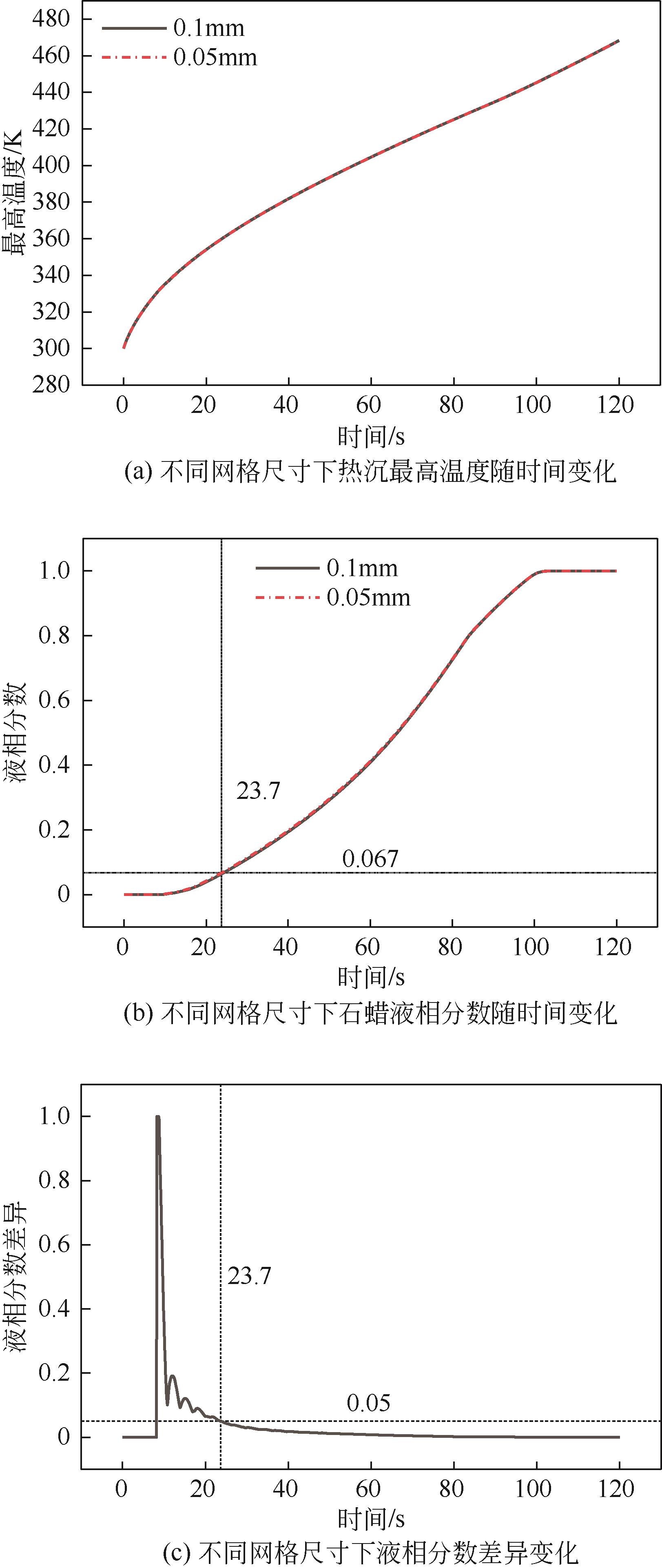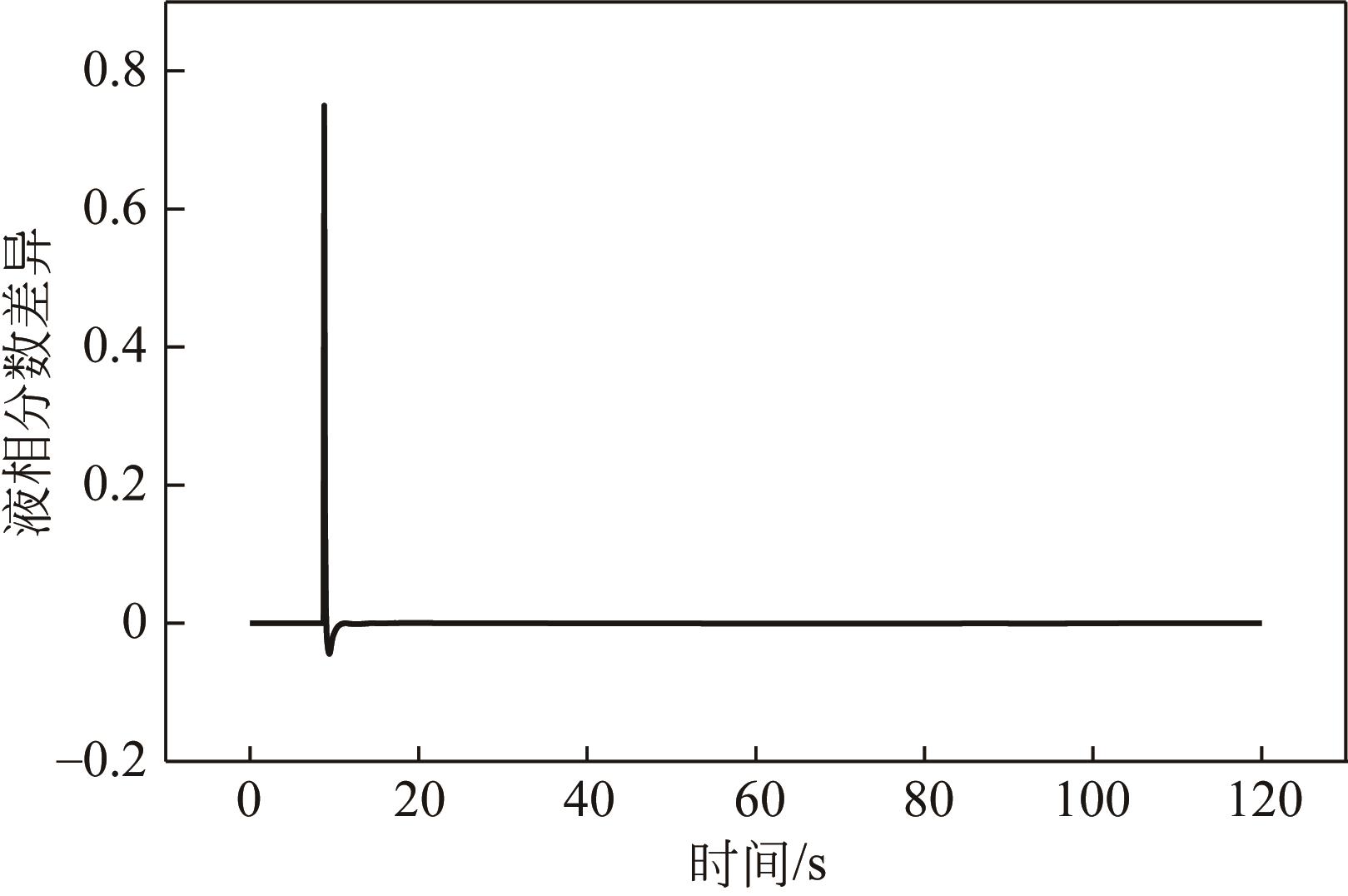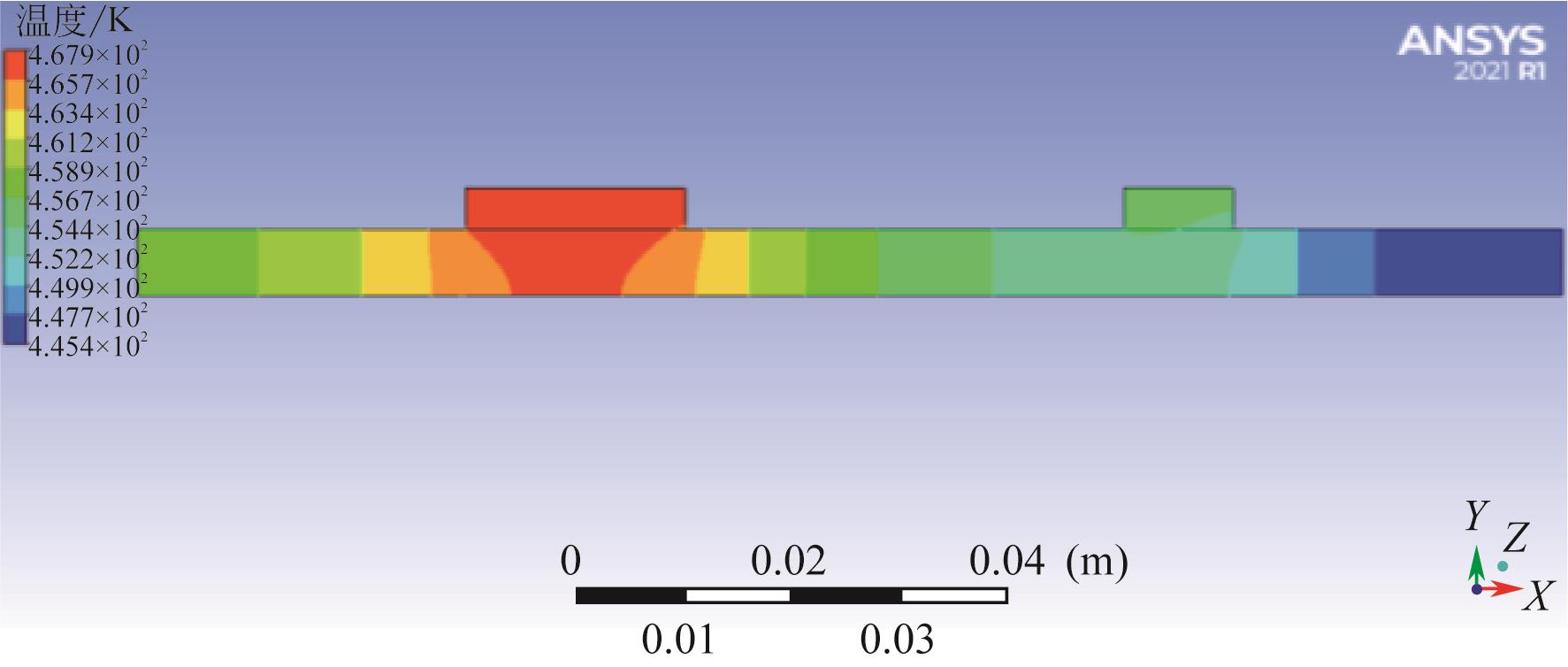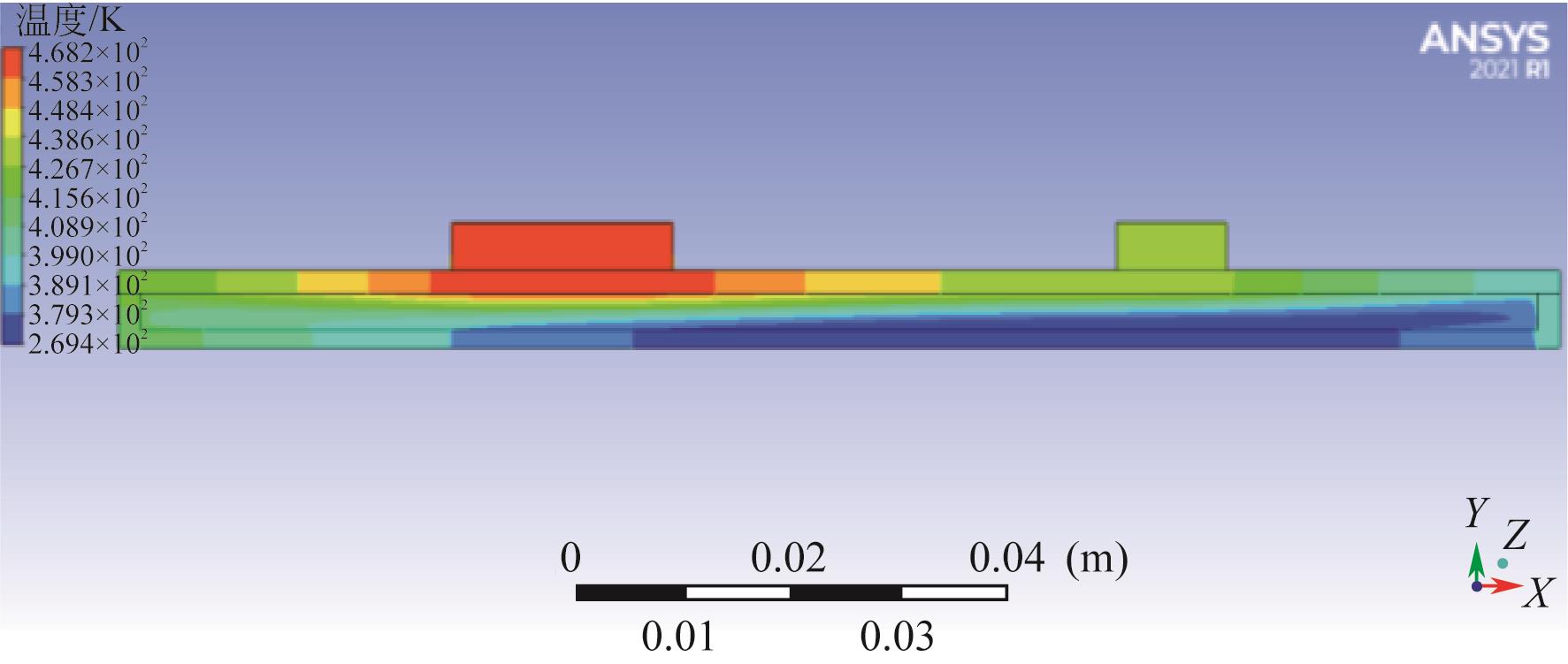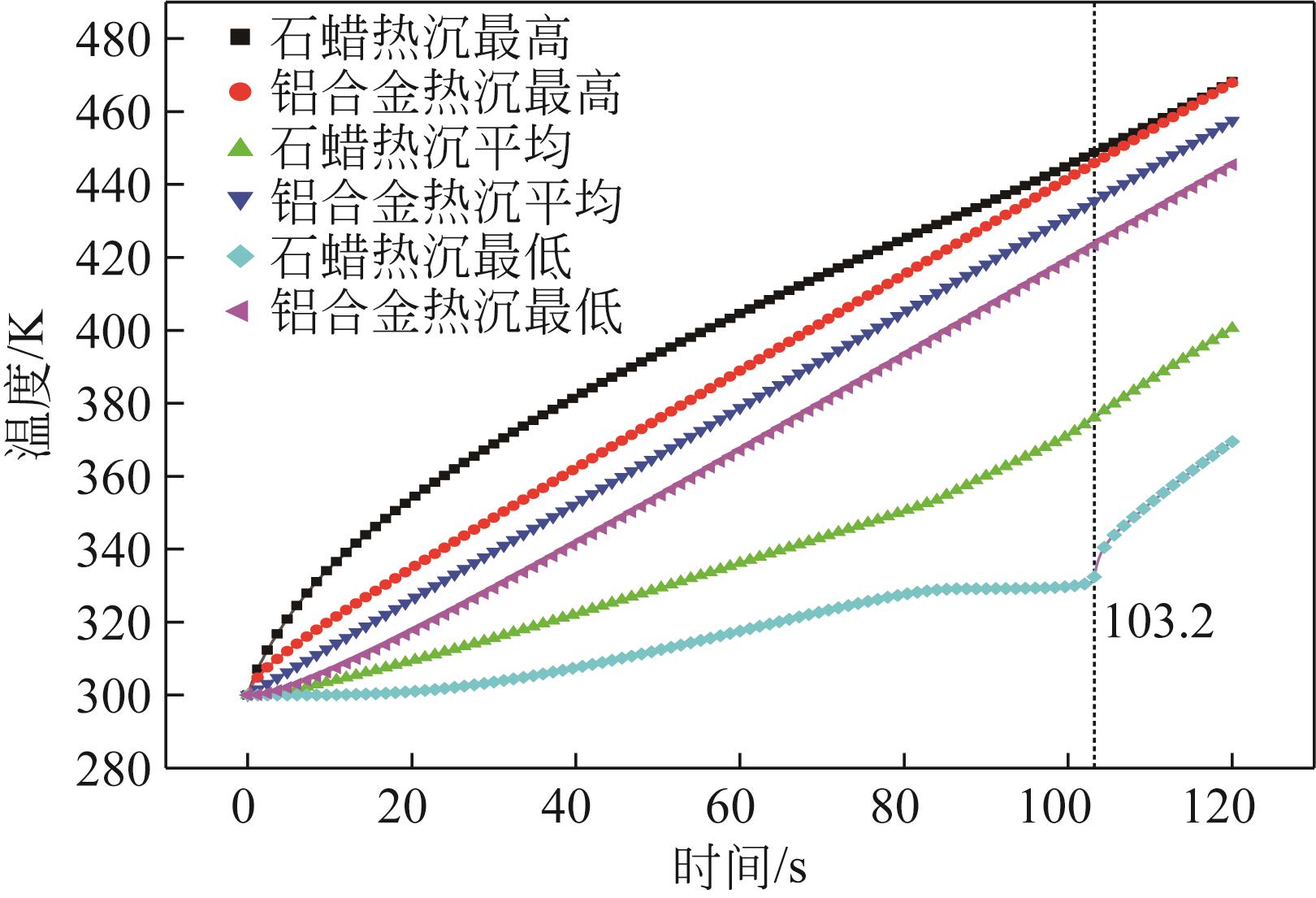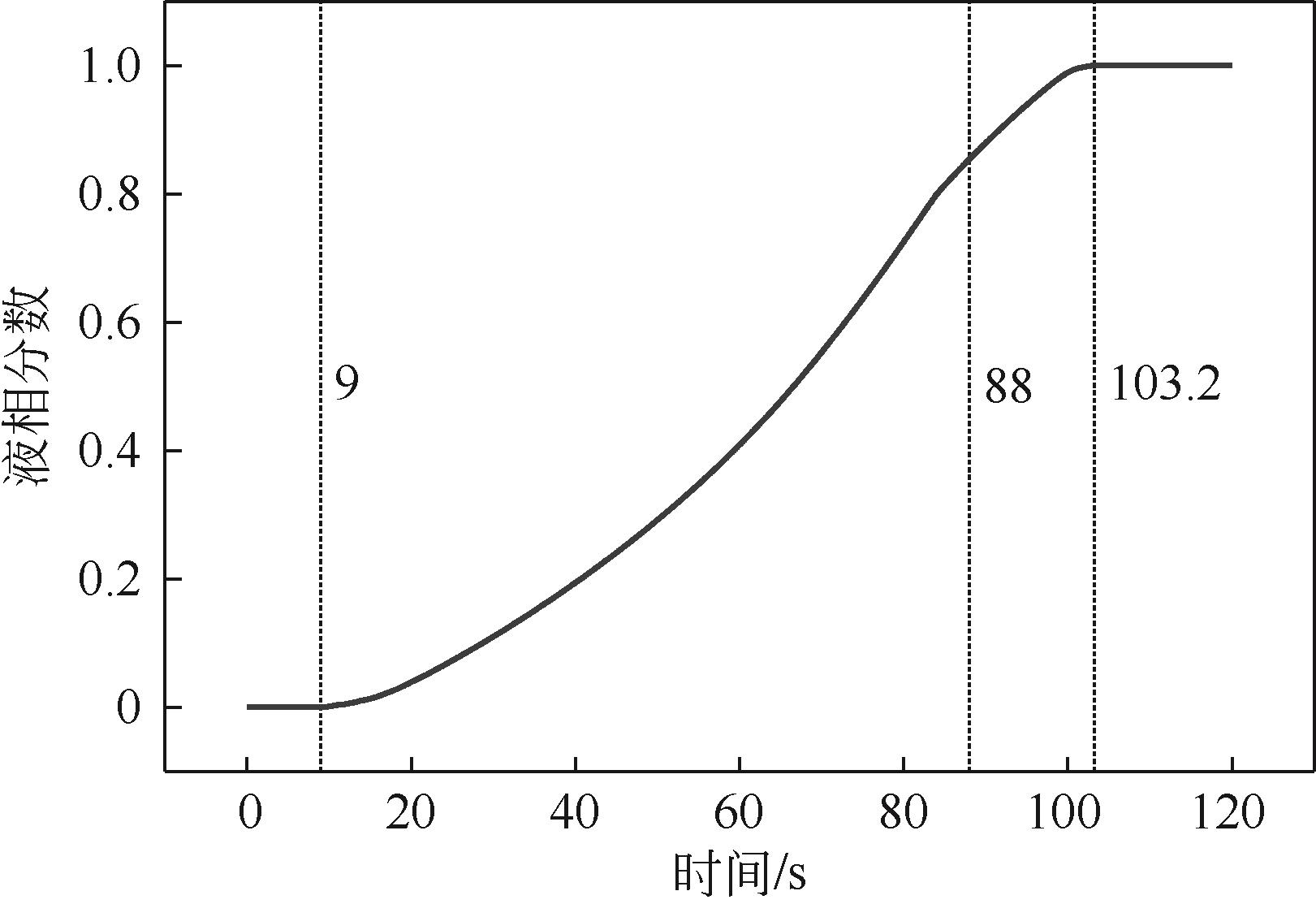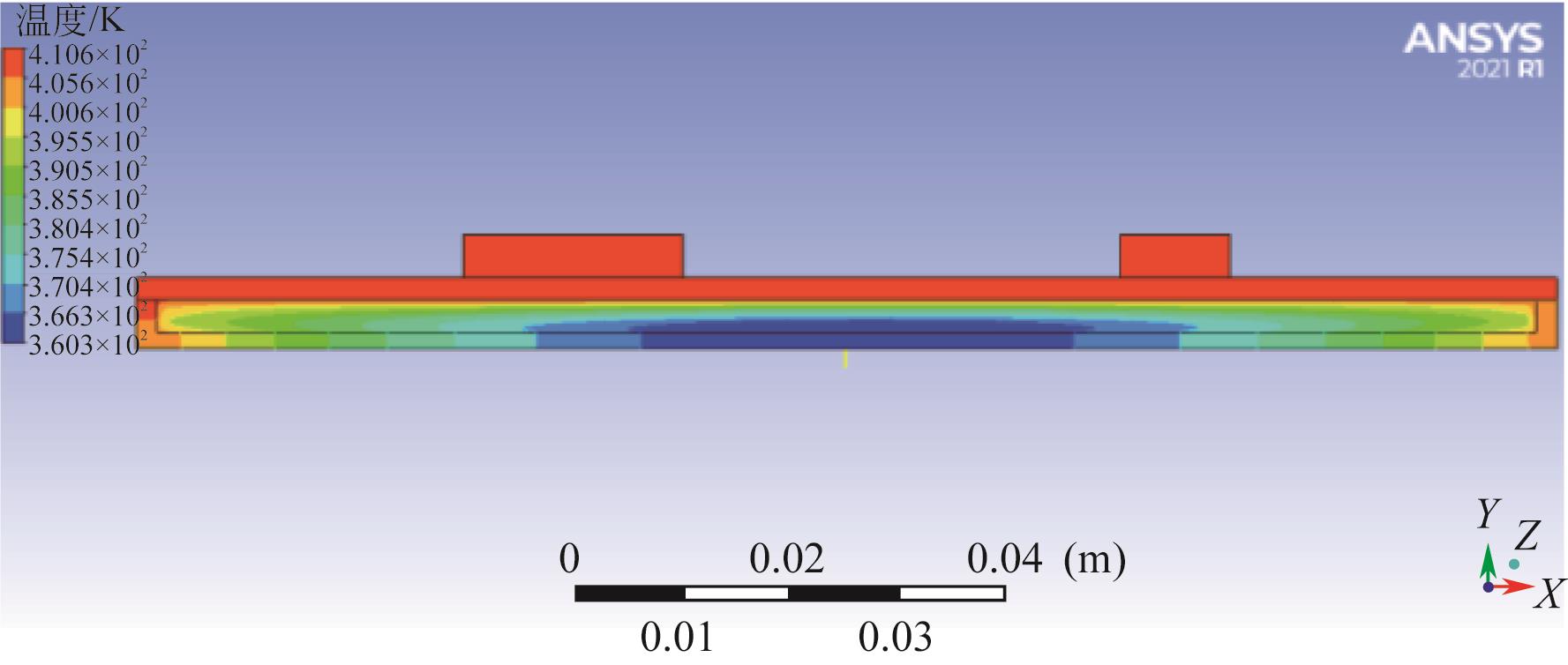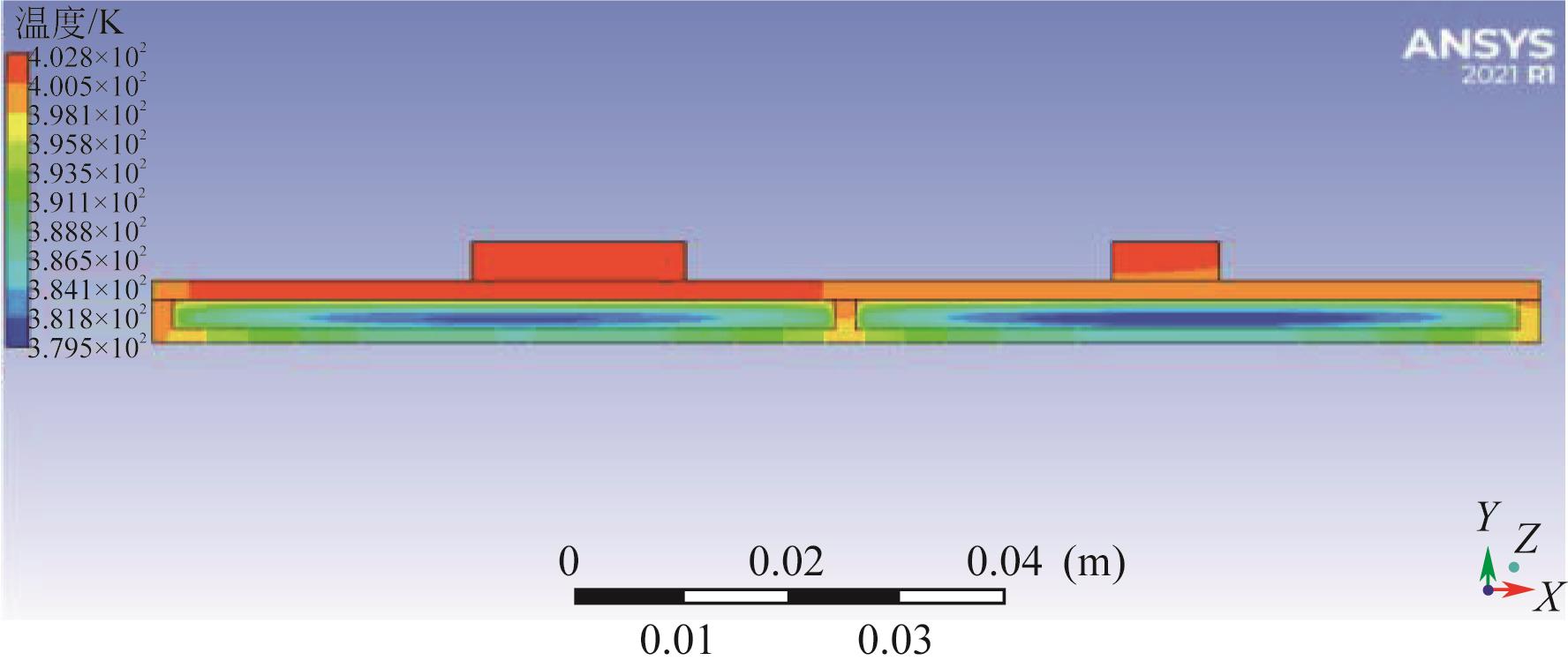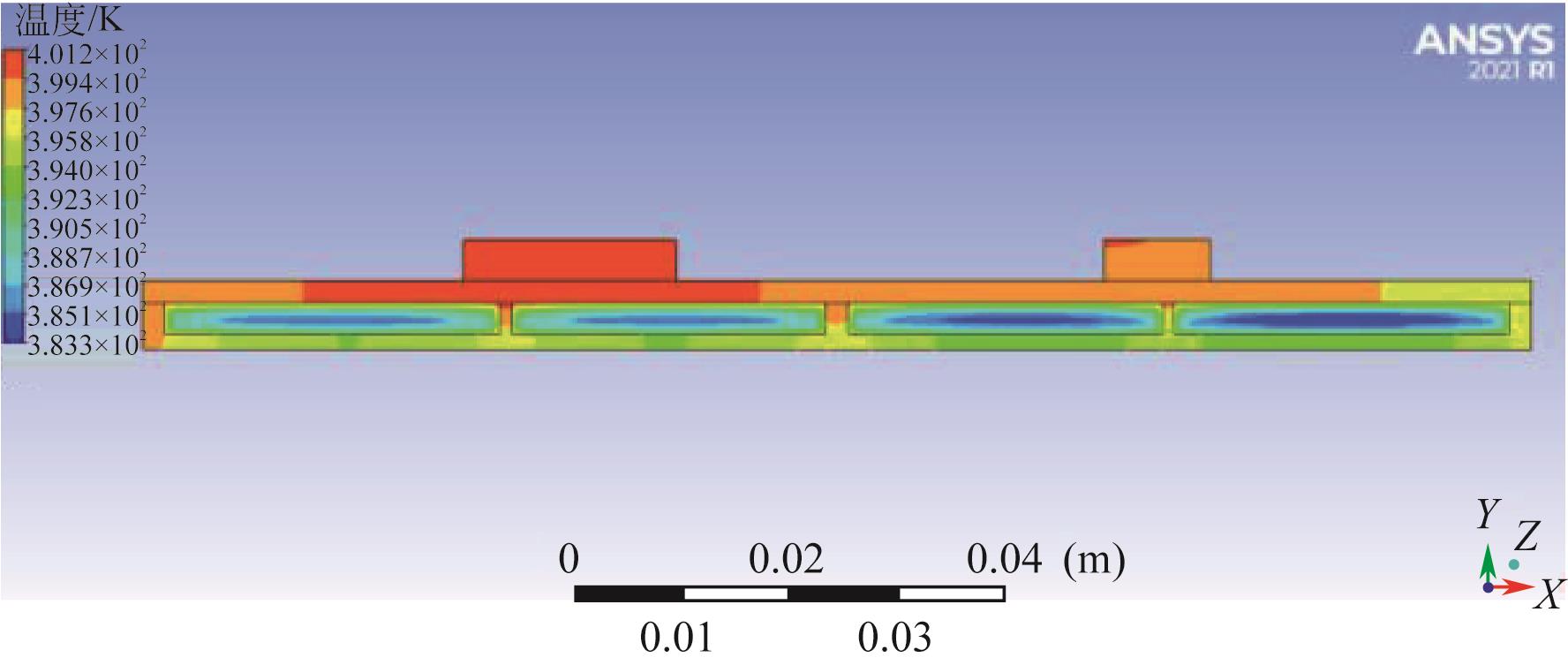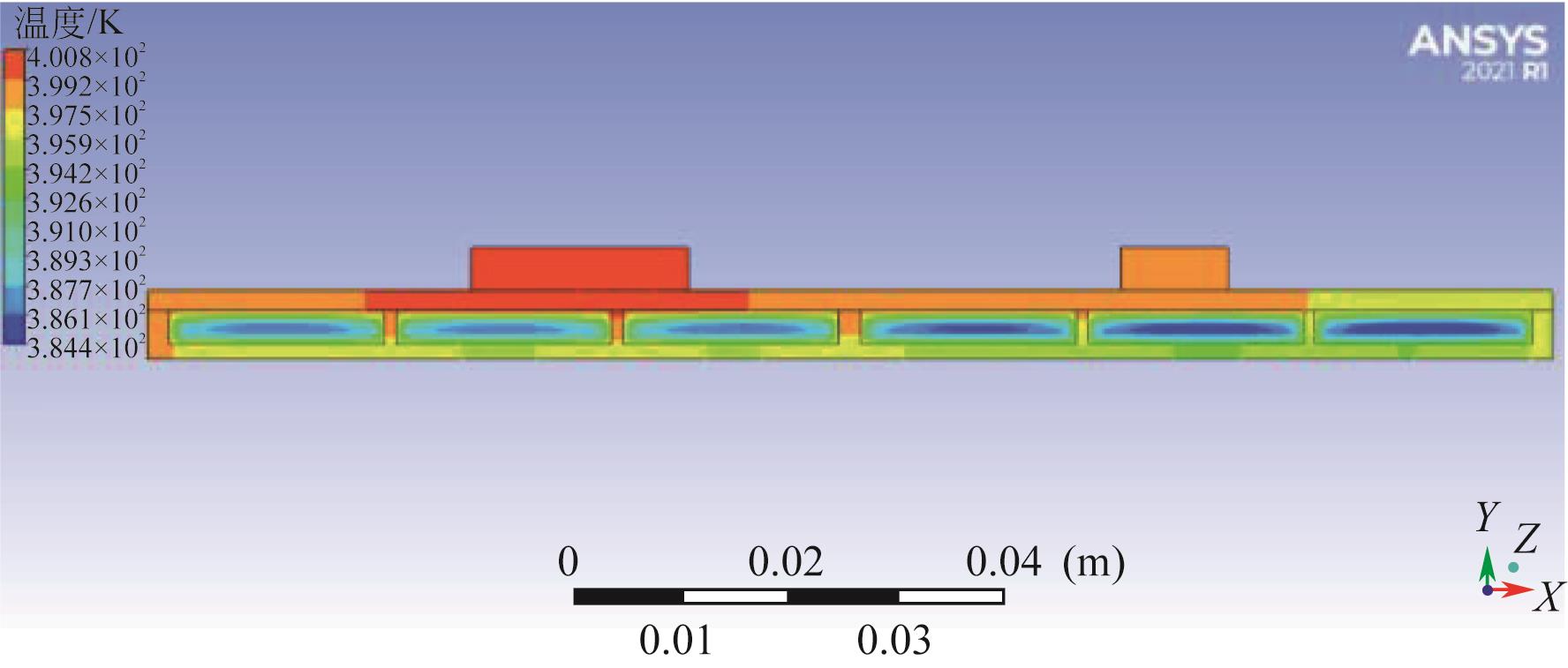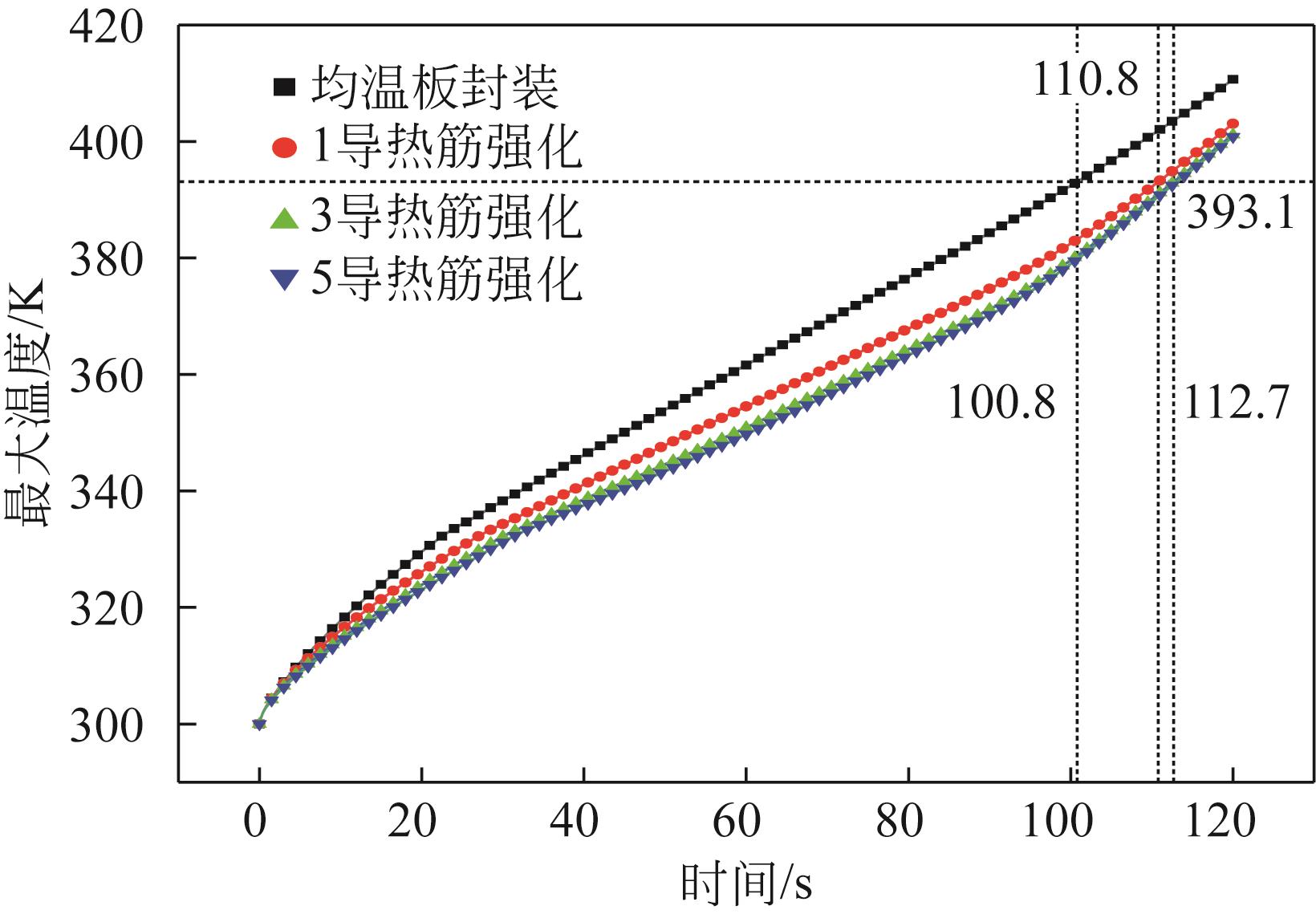Chemical Industry and Engineering Progress ›› 2023, Vol. 42 ›› Issue (3): 1248-1256.DOI: 10.16085/j.issn.1000-6613.2022-0978
• Chemical processes and equipment • Previous Articles Next Articles
Heat transfer simulation and optimization of missile borne phase change heat sink
ZOU Yincai( ), LI Qingguo(
), LI Qingguo( ), WU Hui, ZHONG Xiaobing, CHEN Xianzhi
), WU Hui, ZHONG Xiaobing, CHEN Xianzhi
- Southwest Institute of Technical Physics, Chengdu 610041, Sichuan, China
-
Received:2022-05-26Revised:2022-07-03Online:2023-04-10Published:2023-03-15 -
Contact:LI Qingguo
弹载相变热沉传热仿真与优化
- 西南技术物理研究所,四川 成都 610041
-
通讯作者:李清国 -
作者简介:邹银才(1992—),男,博士,工程师,研究方向为传热学与流体力学。E-mail:zouyincai92@126.com。 -
基金资助:激光院青年科技创新基金(K210034-038)
CLC Number:
Cite this article
ZOU Yincai, LI Qingguo, WU Hui, ZHONG Xiaobing, CHEN Xianzhi. Heat transfer simulation and optimization of missile borne phase change heat sink[J]. Chemical Industry and Engineering Progress, 2023, 42(3): 1248-1256.
邹银才, 李清国, 吴辉, 钟小兵, 陈咸志. 弹载相变热沉传热仿真与优化[J]. 化工进展, 2023, 42(3): 1248-1256.
share this article
Add to citation manager EndNote|Ris|BibTeX
URL: https://hgjz.cip.com.cn/EN/10.16085/j.issn.1000-6613.2022-0978
| 参数 | 石蜡 | 铝合金 |
|---|---|---|
| ρ/kg·m-3 | 850 | 2719 |
| c/J·kg-1·K-1 | 6600/2600(固/液) | 871 |
| q/J·kg-1 | 210000 | — |
| 参数 | 石蜡 | 铝合金 |
|---|---|---|
| ρ/kg·m-3 | 850 | 2719 |
| c/J·kg-1·K-1 | 6600/2600(固/液) | 871 |
| q/J·kg-1 | 210000 | — |
| h/mm | a/mm | (M2/M1)/% | Q2/Q1 | (M2-1/M1)/% | Q2-1/Q1 |
|---|---|---|---|---|---|
| 1 | 4.5 | 85.2 | 1.5 | 31.3 | 3.3 |
| 2 | 5.5 | 75.8 | 1.8 | 31.3 | 3.3 |
| 3 | 6.5 | 69.3 | 2.0 | 31.3 | 3.3 |
| 4 | 7.5 | 64.5 | 2.2 | 31.3 | 3.3 |
| h/mm | a/mm | (M2/M1)/% | Q2/Q1 | (M2-1/M1)/% | Q2-1/Q1 |
|---|---|---|---|---|---|
| 1 | 4.5 | 85.2 | 1.5 | 31.3 | 3.3 |
| 2 | 5.5 | 75.8 | 1.8 | 31.3 | 3.3 |
| 3 | 6.5 | 69.3 | 2.0 | 31.3 | 3.3 |
| 4 | 7.5 | 64.5 | 2.2 | 31.3 | 3.3 |
| 参数 | 数值 | 参数 | 数值 |
|---|---|---|---|
| Amush | 106 | href/J·kg-1 | 210000 |
| TS/K | 329.15 | h/mm | 3 |
| TL/K | 331.15 | a/mm | 6.5 |
| κ/W·m-1·K-1 | 0.25 | b/mm | 4.5 |
| η/kg·m-1·s-1 | 0.004 | qV1/ W·m-3 | 25000000 |
| α/K-1 | 0.001 | qV2/ W·m-3 | 25000000 |
| 参数 | 数值 | 参数 | 数值 |
|---|---|---|---|
| Amush | 106 | href/J·kg-1 | 210000 |
| TS/K | 329.15 | h/mm | 3 |
| TL/K | 331.15 | a/mm | 6.5 |
| κ/W·m-1·K-1 | 0.25 | b/mm | 4.5 |
| η/kg·m-1·s-1 | 0.004 | qV1/ W·m-3 | 25000000 |
| α/K-1 | 0.001 | qV2/ W·m-3 | 25000000 |
| 优化设计方案 | 120s最高温/K | 120s高低温差/K | 达到结温时间/s |
|---|---|---|---|
| 均热板导热板 | 410.6 | 50.3 | 100.8 |
| 1个导热筋 | 402.8 | 23.3 | 110.8 |
| 3个导热筋 | 401.2 | 17.9 | 112.7 |
| 5个导热筋 | 400.8 | 16.4 | 113.1 |
| 优化设计方案 | 120s最高温/K | 120s高低温差/K | 达到结温时间/s |
|---|---|---|---|
| 均热板导热板 | 410.6 | 50.3 | 100.8 |
| 1个导热筋 | 402.8 | 23.3 | 110.8 |
| 3个导热筋 | 401.2 | 17.9 | 112.7 |
| 5个导热筋 | 400.8 | 16.4 | 113.1 |
| 1 | 樊会涛, 闫俊. 相控阵制导技术发展现状及展望[J]. 航空学报, 2015, 36(9): 2807-2814. |
| FAN Huitao, YAN Jun. Development and outlook of active electronically scanned array guidance technology[J]. Acta Aeronautica et Astronautica Sinica, 2015, 36(9): 2807-2814. | |
| 2 | 高晓冬, 王枫, 范晋祥. 精确制导系统面临的挑战与对策[J]. 战术导弹技术, 2017(6): 62-69. |
| GAO Xiaodong, WANG Feng, FAN Jinxiang. The challenges and development paths for precision guidance system[J]. Tactical Missile Technology, 2017(6): 62-69. | |
| 3 | 胡仕友, 赵英海. 导弹武器智能精确制导技术发展分析[J]. 战术导弹技术, 2017(2): 1-6. |
| HU Shiyou, ZHAO Yinghai. Analysis on the development of intelligent precision guidance technology for missile weapons[J]. Tactical Missile Technology, 2017(2): 1-6. | |
| 4 | 孙航, 刘晓光. 未来反舰导弹的制导技术发展趋势[J]. 飞航导弹, 2020(3): 88-91. |
| SUN Hang, LIU Xiaoguang. Development trend of anti-ship missile guidance technology in the future[J]. Aerodynamic Missile Journal, 2020(3): 88-91. | |
| 5 | CHEN Yangli, PENG Changhong, GUO Yun. Experimental and numerical study on melting process of paraffin in a vertical annular cylinder[J]. Thermal Science, 2019, 23(2): 525-535. |
| 6 | NAZIR H, BATOOL M, BOLIVAR OSORIO F J, et al. Recent developments in phase change materials for energy storage applications: a review[J]. International Journal of Heat and Mass Transfer, 2019, 129: 491-523. |
| 7 | ELIAS C N, STATHOPOULOS V N. A comprehensive review of recent advances in materials aspects of phase change materials in thermal energy storage[J]. Energy Procedia, 2019, 161: 385-394. |
| 8 | 李昭, 李宝让, 陈豪志,等. 相变储热技术研究进展[J]. 化工进展, 2020, 39(12):5066-5085. |
| LI Zhao, LI Baorang, CHEN Haozhi, et al. State of the art review on phase change thermal energy storage technology[J]. Chemical Industry and Engineering Progress, 2020, 39(12):5066-5085. | |
| 9 | 林文珠, 凌子夜, 方晓明, 等. 相变储热的传热强化技术研究进展[J]. 化工进展, 2021, 40(9):5166-5179. |
| LIN Wenzhu, LING Ziye, FANG Xiaoming, et al. Research progress on heat transfer of phase change material heat storage technology[J]. Chemical Industry and Engineering Progress, 2021, 40(9):5166-5179. | |
| 10 | ZAYED M E, ZHAO J, ELSHEIKH A H, et al. Applications of cascaded phase change materials in solar water collector storage tanks: a review[J]. Solar Energy Materials and Solar Cells, 2019, 199: 24-49. |
| 11 | CUNHA S R L DA, DE AGUIAR J L B. Phase change materials and energy efficiency of buildings: a review of knowledge[J]. Journal of Energy Storage, 2020, 27: 101083. |
| 12 | LI Dacheng, WANG Jihong, DING Yulong, et al. Dynamic thermal management for industrial waste heat recovery based on phase change material thermal storage[J]. Applied Energy, 2019, 236: 1168-1182. |
| 13 | 高林星, 曹海兵, 李前, 等. 弹载储热装置非稳态换热性能研究[J]. 制导与引信, 2019, 40(1): 47-52. |
| GAO Linxing, CAO Haibing, LI Qian, et al. Research on unsteady heat transfer performance of a missile-loaded heat storage[J]. Guidance & Fuze, 2019, 40(1): 47-52. | |
| 14 | SAHOO S K, DAS M K, RATH P. Application of TCE-PCM based heat sinks for cooling of electronic components: a review[J]. Renewable and Sustainable Energy Reviews, 2016, 59: 550-582. |
| 15 | 何峻杰, 王耀霆, 孟通, 等. 大功率T/R组件相变温控平板热管的散热特性实验研究[J]. 西安交通大学学报, 2022, 56(6): 142-150. |
| HE Junjie, WANG Yaoting, MENG Tong, et al. Experimental study on heat dissipation characteristics of flat heat pipe with temperature-controlled phase change material applied to high-power T/R module[J]. Journal of Xi’an Jiaotong University, 2022, 56(6): 142-150. | |
| 16 | 李涛, 张其刚, 黄鹏. 基于相变材料和均热板的复合散热技术研究[J]. 电子机械工程, 2019, 35(5): 34-36, 41. |
| LI Tao, ZHANG Qigang, HUANG Peng. Study on composite heat dissipation technology based on phase change material and vapor chamber[J]. Electro-Mechanical Engineering, 2019, 35(5): 34-36, 41. | |
| 17 | 尹本浩, 刘芬芬, 王延. 弹载电子设备相变热沉装置散热性能研究[J]. 电子机械工程, 2015, 31(6): 6-10. |
| YIN Benhao, LIU Fenfen, WANG Yan. Study on heat dissipation performance of phase change material heat sink in missile electronics[J]. Electro-Mechanical Engineering, 2015, 31(6): 6-10. | |
| 18 | 林佳, 刘云峰, 尹本浩, 等. 一种复合相变热沉设计与散热性能分析[J]. 航天器环境工程, 2020, 37(4): 390-396. |
| LIN Jia, LIU Yunfeng, YIN Benhao, et al. Design of a phase change material heat sink and analysis of its heat dissipation performance[J]. Spacecraft Environment Engineering, 2020, 37(4): 390-396. | |
| 19 | 汤明春, 谭公礼, 刘则良, 等. 相变热沉结构瞬态仿真计算[J]. 科学技术与工程, 2021, 21(31): 13349-13353. |
| TANG Mingchun, TAN Gongli, LIU Zeliang, et al. Transient simulation calculation of phase change heat sink structure[J]. Science Technology and Engineering, 2021, 21(31): 13349-13353. | |
| 20 | 曹志良. 均热板散热结构的设计研究[J]. 电子器件, 2019, 42(5): 1344-1350. |
| CAO Zhiliang. Design and research of heat plate heat dissipation structure[J]. Chinese Journal of Electron Devices, 2019, 42(5): 1344-1350. | |
| 21 | WONG Shwin Chung, HSIEH Kuo Chun, WU Jiada, et al. A novel vapor chamber and its performance[J]. International Journal of Heat and Mass Transfer, 2010, 53(11/12): 2377-2384. |
| [1] | YANG Yudi, LI Wentao, QIAN Yongkang, HUI Junhong. Analysis of influencing factors of natural gas turbulent diffusion flame length in industrial combustion chamber [J]. Chemical Industry and Engineering Progress, 2023, 42(S1): 267-275. |
| [2] | CHEN Kuangyin, LI Ruilan, TONG Yang, SHEN Jianhua. Structure design of gas diffusion layer in proton exchange membrane fuel cell [J]. Chemical Industry and Engineering Progress, 2023, 42(S1): 246-259. |
| [3] | WANG Tai, SU Shuo, LI Shengrui, MA Xiaolong, LIU Chuntao. Dynamic behavior of single bubble attached to the solid wall in the AC electric field [J]. Chemical Industry and Engineering Progress, 2023, 42(S1): 133-141. |
| [4] | SUN Yuyu, CAI Xinlei, TANG Jihai, HUANG Jingjing, HUANG Yiping, LIU Jie. Optimization and energy-saving of a reactive distillation process for the synthesis of methyl methacrylate [J]. Chemical Industry and Engineering Progress, 2023, 42(S1): 56-63. |
| [5] | GUO Qiang, ZHAO Wenkai, XIAO Yonghou. Numerical simulation of enhancing fluid perturbation to improve separation of dimethyl sulfide/nitrogen via pressure swing adsorption [J]. Chemical Industry and Engineering Progress, 2023, 42(S1): 64-72. |
| [6] | SHAO Boshi, TAN Hongbo. Simulation on the enhancement of cryogenic removal of volatile organic compounds by sawtooth plate [J]. Chemical Industry and Engineering Progress, 2023, 42(S1): 84-93. |
| [7] | CHEN Lin, XU Peiyuan, ZHANG Xiaohui, CHEN Jie, XU Zhenjun, CHEN Jiaxiang, MI Xiaoguang, FENG Yongchang, MEI Deqing. Investigation on the LNG mixed refrigerant flow and heat transfer characteristics in coil-wounded heat exchanger (CWHE) system [J]. Chemical Industry and Engineering Progress, 2023, 42(9): 4496-4503. |
| [8] | LIU Xuanlin, WANG Yikai, DAI Suzhou, YIN Yonggao. Analysis and optimization of decomposition reactor based on ammonium carbamate in heat pump [J]. Chemical Industry and Engineering Progress, 2023, 42(9): 4522-4530. |
| [9] | ZHAO Xi, MA Haoran, LI Ping, HUANG Ailing. Simulation analysis and optimization design of mixing performance of staggered impact micromixer [J]. Chemical Industry and Engineering Progress, 2023, 42(9): 4559-4572. |
| [10] | WANG Chen, BAI Haoliang, KANG Xue. Performance study of high power UV-LED heat dissipation and nano-TiO2 photocatalytic acid red 26 coupling system [J]. Chemical Industry and Engineering Progress, 2023, 42(9): 4905-4916. |
| [11] | YE Zhendong, LIU Han, LYU Jing, ZHANG Yaning, LIU Hongzhi. Optimization of thermochemical energy storage reactor based on calcium and magnesium binary salt hydrates [J]. Chemical Industry and Engineering Progress, 2023, 42(8): 4307-4314. |
| [12] | LI Lanyu, HUANG Xinye, WANG Xiaonan, QIU Tong. Reflection and prospects on the intelligent transformation of chemical engineering research [J]. Chemical Industry and Engineering Progress, 2023, 42(7): 3325-3330. |
| [13] | YU Junnan, YU Jianfeng, CHENG Yang, QI Yibo, HUA Chunjian, JIANG Yi. Performance prediction of variable-width microfluidic concentration gradient chips by deep learning [J]. Chemical Industry and Engineering Progress, 2023, 42(7): 3383-3393. |
| [14] | SHAN Xueying, ZHANG Meng, ZHANG Jiafu, LI Lingyu, SONG Yan, LI Jinchun. Numerical simulation of combustion of flame retardant epoxy resin [J]. Chemical Industry and Engineering Progress, 2023, 42(7): 3413-3419. |
| [15] | WANG Shuo, ZHANG Yaxin, ZHU Botao. Prediction of erosion life of coal water slurry pipeline based on grey prediction model [J]. Chemical Industry and Engineering Progress, 2023, 42(7): 3431-3442. |
| Viewed | ||||||
|
Full text |
|
|||||
|
Abstract |
|
|||||

